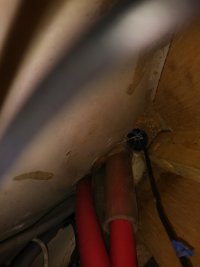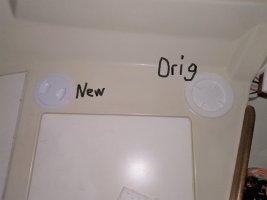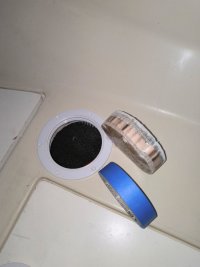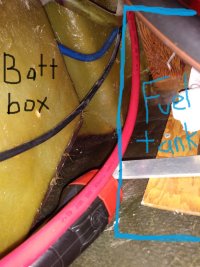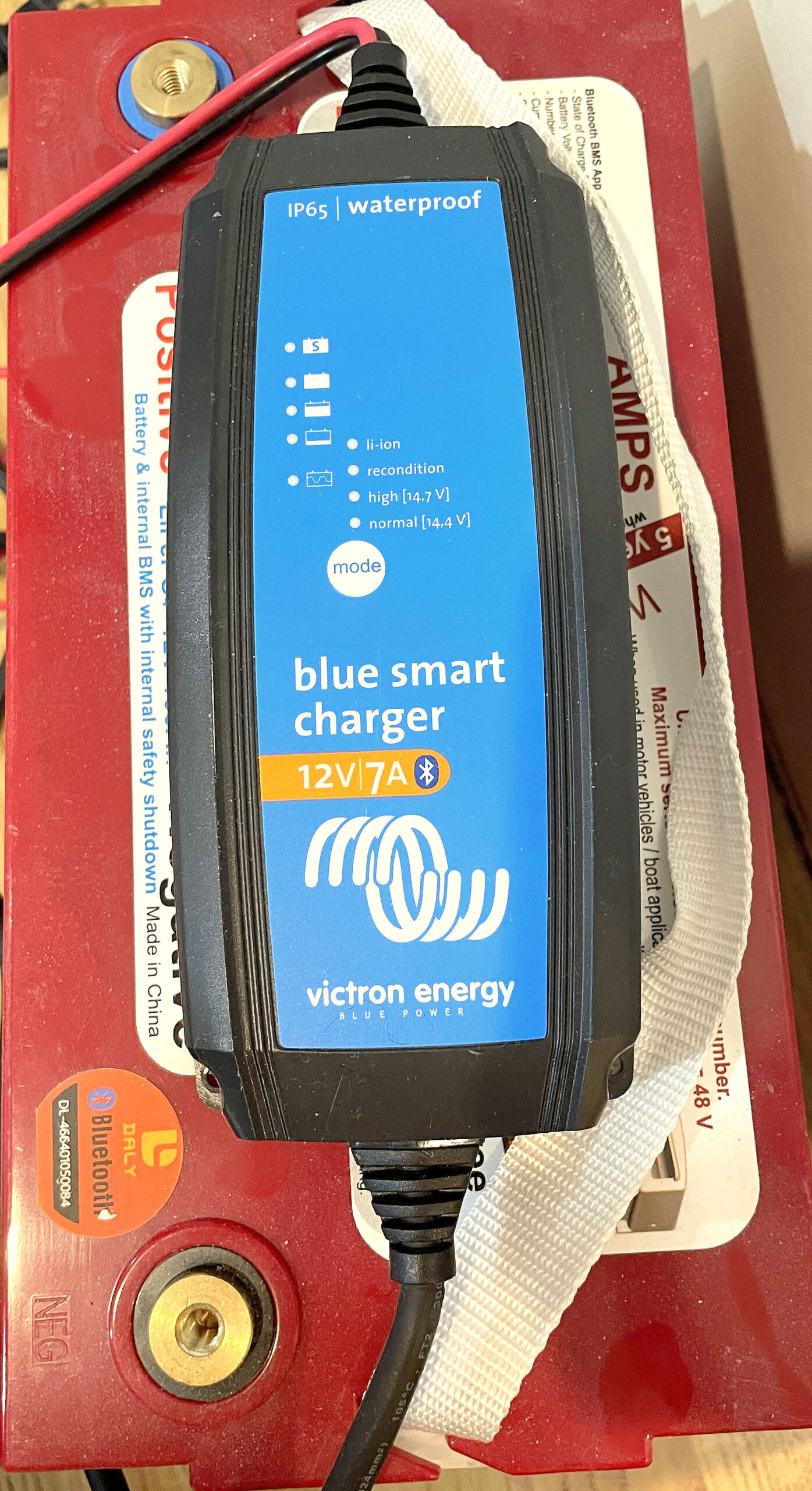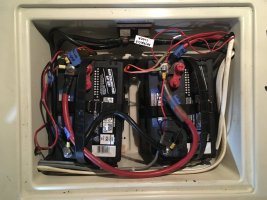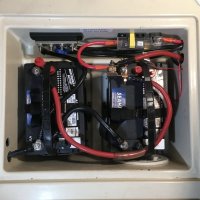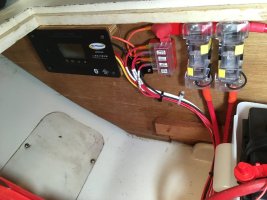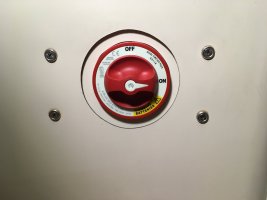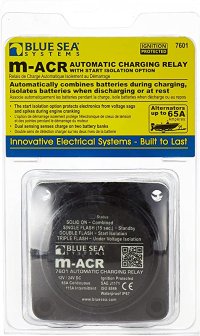I could have replaced my 90's era battery charger with a newer one, pretty much in-kind for a simple replacement project. But I had read about the benefits of having separate start and house banks, and an ACR, and, along with the compelling form factor of the Blue Sea Battery Link charger, I decided to go that way. I had also read about the recommendation to have overcurrent protection on all hot wires, so along with the fusing recommended by Blue Sea for the chosen charger, the project was starting to get complicated. But I persisted and have now completed a considerable re-work of my power wiring system.
The "factory" battery bank under the quarter berth had been hacked over time, with several "always on" power connections with various fuse types, the battery compartment had been used as a convenient path for wiring to simply pass through, and a non-functioning dual shunt served as the main ground bus:
View attachment 46243
After installation of the new charger, and relocation of the "always on" connections to the dedicated house bank, the starter bank looks a bit cleaner:
View attachment 46244
For fusing at the battery, I liked the idea of an
MRBF for compactness, but the height of the fuse block was too much. I was able to solve that problem when I found
this kit from Fisheries Supply, so the fuse blocks could be installed horizontally.
Meanwhile, the dedicated house bank compartment, in the settee just forward of the nav table, was used for installation of fuse blocks recommended by Blue Sea for the charger and alternator connections, and a small fuse block was installed for the "always on" loads. A solar panel controller was also installed. Originally, the alternator output was connected directly to the battery cable at the starter motor. In the revised circuitry, the alternator output is instead connected to the house bank, since that bank will typically need more charging, and more often. Not one to casually modify the complex wiring of my engine, I wondered if that was necessary, but it is recommended by both Blue Sea and MaineSail when start and house duties are separated. In the image below, the two larger fuse blocks join with the smaller 4-circuit unit with a
3-way bus link and a
post from Blue Sea.
View attachment 46245
Because so many wires were extended to the house bank (alternator output, charger, "always on", solar), I installed a new conduit from the house bank to the DC panel/charger area, using a 1-1/4" flexible hose intended for a small shop vac:
View attachment 46246
The separate battery banks are connected to their respective loads through a 2-pole switch in place of the original off-1-2-both switch. The smaller face of the new switch necessitated fitting a trim ring for aesthetics, accomplished with some of the same almond colored formica I had used in replacing the countertop in the head. (A 48x90 sheet of Formica goes a long way!)
View attachment 46247
At the heart of all the changes is the charger, which thanks to its compact form factor fits neatly under the nav table:
View attachment 46248
With these improvements, my batteries will be charged by a modern 3-step charger, and my start and house batteries will be kept separated unless a problem arises. So less fiddling with the selector switch, and little chance of draining the start battery accidentally. And while considerable "stuff" has been added to the locker which houses the house bank, there is no appreciable loss in storage capacity, and trouble shooting of any issues in the electrical system has likely been simplified.
Thanks again especially to KennethK for thought provoking comments and blog information.


